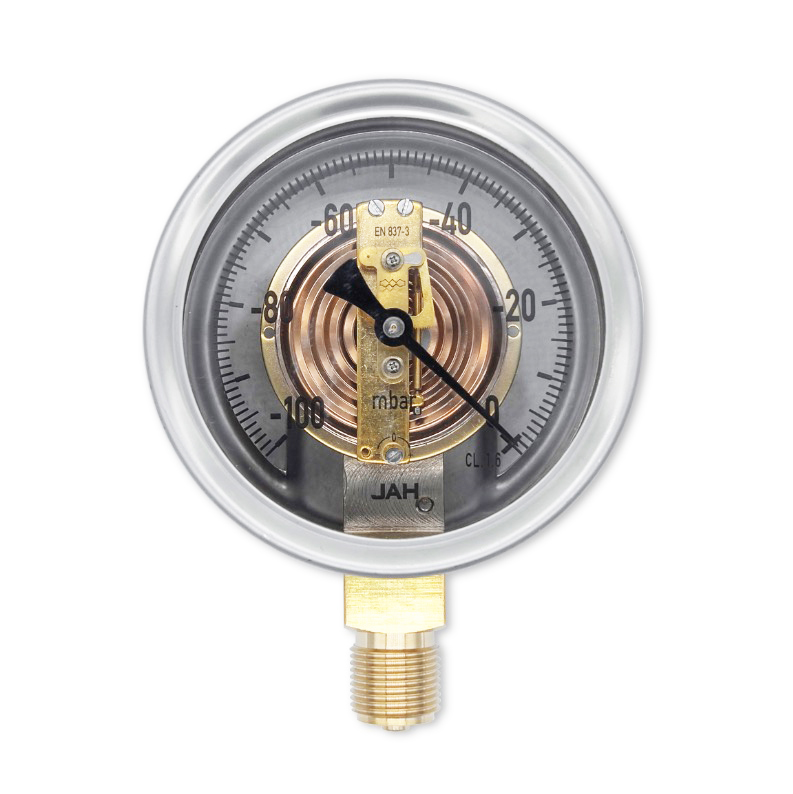
9 月 . 30, 2024 11:44 Back to list
Diaphragm Seal Pressure Gauge for Reliable Measurement Services in Various Applications
Understanding Diaphragm Seal Type Pressure Gauges Applications and Benefits
Pressure measurement is a fundamental aspect in various industries, particularly in situations where media are corrosive, viscous, or cryogenic, posing risk to standard pressure gauges. One effective solution to these challenges is the diaphragm seal type pressure gauge. This article explores what diaphragm seal type pressure gauges are, how they function, their applications, and the benefits they provide.
What is a Diaphragm Seal Type Pressure Gauge?
A diaphragm seal type pressure gauge is a device used to measure the pressure of fluids or gases, which incorporates a flexible diaphragm between the process fluid and the pressure sensing element, usually a Bourdon tube or a pressure transducer. The diaphragm is made from materials such as stainless steel, PTFE, or other polymers to withstand harsh conditions. This design allows the gauge to accurately measure pressure while protecting it from the effects of the process medium.
How Does It Work?
The working principle of a diaphragm seal type pressure gauge is relatively straightforward. When pressure is exerted on the process medium, it acts on the diaphragm. The diaphragm then deflects, translating this motion into a readable pressure measurement on the gauge. This design effectively isolates the sensing element from the process conditions, providing a reliable reading without compromising the integrity of the gauge.
Applications of Diaphragm Seal Type Pressure Gauges
Diaphragm seal type pressure gauges are particularly advantageous in various applications
1. Corrosive Environments In chemical processing, the likelihood of exposure to corrosive fluids makes diaphragm seals essential. They prevent direct contact between the corrosive medium and the gauge, prolonging the lifespan and ensuring accurate readings.
2. Viscous Fluids For thick or viscous media, standard pressure gauges can become clogged, leading to erroneous readings. Diaphragm seals overcome this limitation, ensuring smooth operation and reliable measurements.
3. Hygienic Applications In pharmaceutical or food production settings, maintaining sanitary conditions is critical. Diaphragm seal pressure gauges can be designed with cleanable surfaces and smooth internal passages to meet hygiene standards.
wika diaphragm seal type pressure gauge service

4. Cryogenic Applications Extremely low temperatures can affect standard gauges and their capabilities. Diaphragm seal gauges can be designed to accommodate such conditions, ensuring precise readings in cryogenic systems.
Benefits of Using Diaphragm Seal Type Pressure Gauges
The use of diaphragm seal type pressure gauges brings numerous benefits
- Protection They provide a protective barrier that extends the life of the gauge by shielding it from harsh process conditions.
- Accuracy By isolating the measuring element from the process, diaphragm seals help maintain the accuracy of pressure readings, even in challenging environments.
- Versatility These gauges can be customized with various materials and configurations for a wide range of applications, from high-temperature environments to low-pressure measurements.
- Reduced Maintenance With their protective design, these gauges often require less maintenance, leading to cost savings over time.
- Enhanced Safety By preventing leaks and exposure to hazardous materials, diaphragm seals contribute to a safer working environment, especially in industries dealing with toxic or flammable substances.
Conclusion
Diaphragm seal type pressure gauges are essential tools across various industries where traditional pressure measurement is compromised by the process environment. Their ability to provide accurate readings while protecting the sensitive components of the gauge has made them a preferred choice in numerous applications. Understanding the operational benefits and applications of these devices enhances their adoption and effectiveness in maintaining safe, efficient, and reliable systems in today's complex industrial landscape.
-
Capillary Type Differential Pressure Gauge Precision Measurement Solutions
NewsMay.19,2025
-
Diaphragm Seal Pressure Gauges High Accuracy & Corrosion Resistance
NewsMay.19,2025
-
Pressure Gauge with Diaphragm Seal & Manifold Reliable Industrial Solutions
NewsMay.18,2025
-
Digital Differential Pressure Gauge Price Precision Sensors & Best Deals
NewsMay.18,2025
-
Wika Diaphragm Seal Pressure Gauge High-Accuracy & Durable Solutions
NewsMay.18,2025
-
Diaphragm Type Differential Pressure Gauges High-Accuracy & Durable Solutions
NewsMay.17,2025
